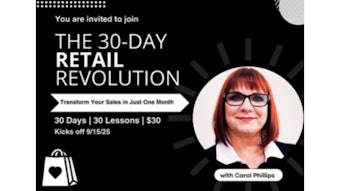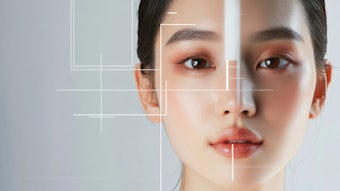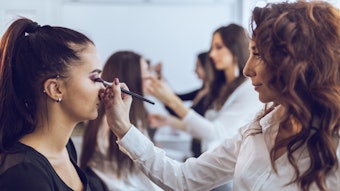
At a value of $21.7 billion, according to Euromonitor International, the global men’s grooming sector is sizeable, although it accounts for only 8% of value sales in the cosmetics and toiletries market as a whole and is smaller than price-pressured commodity sectors (oral hygiene and bath and shower products, for example). In terms of dynamism, the sector grew 5% in fixed exchange rate terms in 2006—approximately on par with the entire cosmetics and toiletries market. Maturation in the traditional men’s grooming areas of shaving products and deodorants, which accounted for 79% of total sector sales in 2006, is holding back growth. Even burgeoning demand from the emerging markets and the niche appeal of newer men’s grooming subsectors—such as moisturizers, exfoliators and hair styling products—is proving insufficient to halt the slowdown.
Culture, Age Impact Growth
It is now more acceptable for men to take care of their appearance than in decades past. Women, too, are encouraging this notion, with the message that being well-groomed is sexy. Consumer men’s magazines—such as Maxim, GQ, Men’s Health and FHM—educate consumers and give them confidence to make purchasing decisions, while globalization and the spread of Western ideals ensure that the popularity of men’s grooming is truly a worldwide phenomenon. That is not to say that all men across the globe are using men’s grooming products and at an equal level. The U.K. is the chart-topping major market in terms of per capita expenditure at $23, while China is at the other end of the spectrum with less than $1 per capita expenditure.
In predominantly Muslim countries, where having a beard is considered a sign of religious devotion, men’s grooming is significantly less well established. Saudi Arabia and Egypt, for example, both have a per capita spend well below the global average. In Asia-Pacific, sales are slower in the important shaving category, and despite intensive marketing in the fast-emerging economies of China and India, the two markets sit near the world bottom for per capita expenditure on the category. The spread of metrosexual ideals is evident, though, in the dynamism of what are traditionally “macho” cultures, such as South Africa, Australia and New Zealand.
South Africa was one of the world’s most dynamic men’s grooming markets, with sales increasing by more than 13% (in U.S. dollar terms) for the period 2005–2006. While the most widely used men’s grooming products in South Africa are extensions of well-known mainstream brands, there are several premium skin care ranges specifically targeted at men entering the market. Hugo Boss has a men’s skin care range linked to its popular fragrance range. Estée Lauder’s Lab Series is another premium skin care range for men that is doing well in South Africa. Clarins also launched Nickel, a new premium male skin care range, in February 2006, indicating that male consumers in this market are increasingly amenable to nontraditional products.
Age is also a factor in uptake; the young, having been brought up with the idea, are more accepting of grooming regimes and receptive to new products, while older men are more brand loyal and used to a more basic daily hygiene regimen. While this demographic divide is proving hard to bridge, manufacturers are throwing their efforts into the task, and high-end labels such as Aramis Lab Series and Clinique Skin Supplies for Men have already successfully cracked this market.
Given the impact of demographics on product uptake, manufacturers must consider the needs of their target consumer group on a market by market basis; products cannot simply be launched on a global platform. For example, due to the conservative grooming habits of Indian males, men’s skin care is unlikely to take off without careful consideration. Most male consumers will not want to be spotted buying a skin care product, as the use of cosmetics continues to be regarded as a female habit. Creating awareness by using a celebrity spokesman to demonstrate that grooming for men is acceptable and that it serves more of a functional than cosmetic benefit is one way to change this perception.
Room for Growth in Leading Markets
The concept and culture of men’s grooming is most developed in the mature economies of Western Europe, North America and Australasia. Men in some Western European markets have traditionally followed a daily grooming regimen similar to that of women, and the trend is spreading fast throughout the region. Given that men’s grooming is relatively undeveloped compared to other cosmetics and toiletries sectors, these developed markets returned strong growth figures over the 2001–2006 period, even during the economic downturn in the U.S. However, while the sector as a whole is not mature, men’s razors and blades and deodorants are approaching maturity in these markets, and the challenge now is to expand penetration to non-core consumers and add value.
In North America, mass-market, sport- and sex-orientated brands are targeting teenage boys and younger men, while premium brands, such as Gucci Pour Homme and Aramis, are aimed at aging but more affluent men. Manufacturers are also trying to generate usage of bath and shower products and hair and skin care. There are definite signs of increasing sophistication in this market, with natural and organic products coming to market and “doctor” brands appealing to the functional needs of men.
In pre- and post-shave, the key word is “sensitive.” Nivea for Men is a good example. The brand has grown rapidly in recent years, and, as of December 2005, offered a sensitive post-shave balm, shaving cream, moisturizing lotion and face wash. Key growth opportunities lie in adding beneficial skin care properties to shave products and in continuing to cultivate acceptance of nontraditional subsectors—such as men’s skin care and bath and shower products—via advertising and editorial coverage in men’s magazines.
To continue reading this article, please click here. You will be redirected to GCI magazine's Web site.










